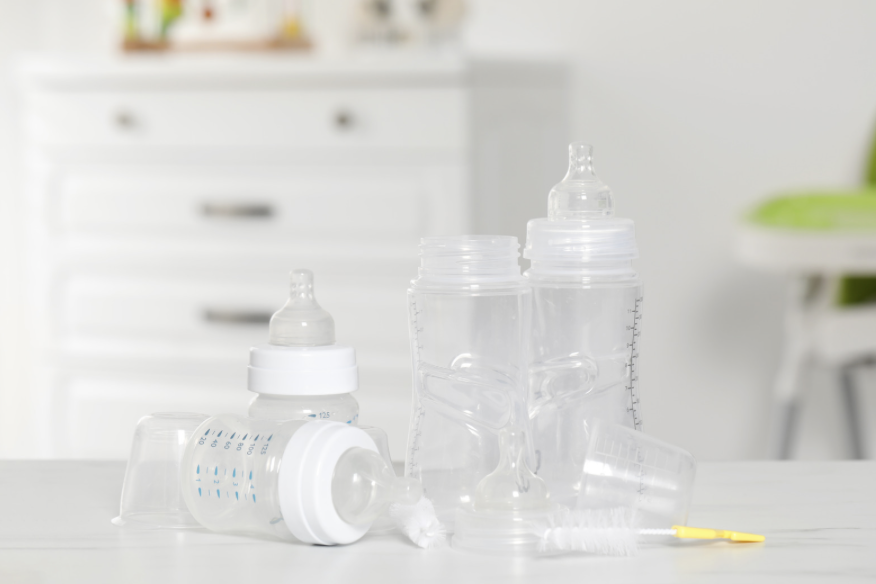Is Your Baby Outgrowing Their Gear? Know When to Switch or Ditch
In the first few months of life, newborns grow and change so rapidly that it can be challenging to keep up. Just when you think you’ve figured them out, they hit a developmental milestone or experience a growth spurt, and suddenly they seem like a completely different baby! Similarly, just as you think you’ve mastered what you need for their care, you find yourself questioning, “Should I still be using this?” or “Do I need to switch sizes?”
If you're unsure how to tell, here's a guide on key baby care items that frequently need to be updated or replaced, and how to determine the right time to ditch or switch them!
1. Diaper Sizes - SWITCH IT!
Understanding when to switch diaper sizes can be tricky. Each diaper brand provides weight guidelines on their packaging, which are useful but not definitive. Babies grow at unique rates, and weight alone may not provide a complete picture. It's equally important to pay attention to how the diaper fits.
Signs like red marks or indentations from the diaper's edges suggest it's time to size up. There’s no harm in sizing up a bit early, as long as the diaper is securely fastened. Conversely, a tight diaper can be uncomfortable, causing leaks and blowouts. When in doubt, size up, and be mindful of how many diapers you buy in each size, especially newborn diapers which typically fit up to only 8 pounds.
2. Nipple Sizes - SWITCH IT!
Navigating bottle feeding includes more than choosing the right formula or breast milk. The nipple size, indicating the flow level, is crucial to your baby’s feeding experience. Most parents are unaware that bottle nipples come in various sizes. Each brand has its own labeling system, but generally, you’ll start with a “slow flow” nipple.
I recommend starting with products like Dr. Brown’s Natural Flow Anti-Colic Narrow Baby Bottle at Level 1. As your baby’s sucking strength increases, you may need to upgrade the nipple size if:
Your baby takes longer than usual to finish their bottle.
They seem frustrated during feeding, pulling away and crying.
They suck harder than usual, potentially collapsing the nipple.
Similarly, if your little one is guzzling too quickly or struggling with excess gas, a slower flow nipple could be a better fit. Most brands offer an ultra slow flow option, often called a “preemie” option as they are targeted for premature babies. Sometimes switching your baby from a slow flow to an ultra slow flow can help them feed better in the first few weeks.
3. Swaddles - SWITCH IT THEN DITCH IT!
Swaddles are like a snug, comforting hug for your newborn, and they will be an invaluable tool for soothing your newborn. However, swaddling preferences can vary widely among babies. While some love a tight swaddle with arms in, others may prefer their arms up or only tolerate swaddling during sleep. Despite preferences, I advise using a Velcro or zipper swaddle for safety and ease, as traditional blanket swaddling can pose risks if not done correctly.
4. Baby Loungers/Pillows - Time to Ditch!
As much as you will love holding and snuggling your newborn, there will be times when you simply must put them down and you will need a safe place to do so. While baby loungers like the Dock A Tot or Snuggle Me provide a great spot for supervised awake time, they are not safe for sleep. These should only be used while the baby is awake and under supervision.
They also serve as excellent props for early tummy time, helping support your baby in a more comfortable position. However, around 3-4 months, as your baby becomes more mobile, it's safer to transition them from loungers to more secure environments like swings or bouncers and to invest in a stimulating playmat for advancing tummy time activities.
As your little one grows, so too will their needs. Navigating these changes can be a breeze with a little guidance and a lot of love. Trust your instincts, seek advice when needed, and you'll always make the right choice for your baby's comfort and safety.
All my (dou)love,
Kim



